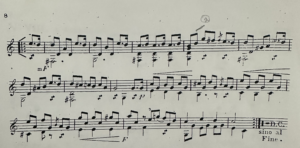Repeated sections in music offer a chance to unleash creativity. Regardless of genre or difficulty level, it’s common to encounter segments that repeat in their entirety—whether marked with repeat signs or a return to earlier material. In such instances, it’s beneficial to delve into the possibilities for interpretation.
The most apparent choices involve dynamics, such as loud versus soft, or playing closer to the bridge (ponticello) versus nearer the fingerboard (tasto). While these options may seem like default solutions, they are reliable and effective variations. The key is to fully commit to implementing the chosen variation throughout the entire section. For instance, when opting for a shift from loud to soft, it’s crucial to achieve an immediate and noticeable drop in volume, rather than just a subtle difference between the two iterations. Similarly, if altering right-hand tone, maintaining the adjusted position until the passage concludes is essential.
But what other avenues can we explore?
One subtle yet effective option is to reconsider the left-hand fingering during the repeated passage.
Undoubtedly, this approach demands additional effort during the learning process. but, it yields exceptionally musical outcomes and prompts exploration of the fingerboard.
One example where I’m applying the re-fingering idea is in Giuliani’s Op148. No.2, Lo Scherzo. In the snippet below you’ll see in the 4th bar on the first beat, that d followed by g, f#, e, d. The first time around I play the g, f#, and e notes on the first string, then on the repeat, I use a glissando and take it up to the g note on the second string, playing g, f#, and e on the second string adds a nice variation to play.

